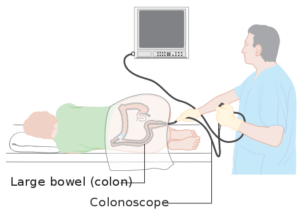The rectum is the lower portion of the colon. What are the odds that any rectal bleeding is a sign of colon cancer?
“Most often there are no symptoms in early stages,” says Dr. Maxwell Chait, MD, gastroenterologist at ColumbiaDoctors Medical Group in Westchester County, NY. By the time a person begins having signs of CC, it’s almost always in an advanced stage.
“Rectal bleeding is only one symptom of colon cancer,” continues Dr. Chait.
“Rectal bleeding is most often microscopic in colon cancer shown by an occult blood test of the stool.
“Less than 20 percent of rectal bleeding cases are due to colon cancer.”
What is this disturbing rectal sign usually more indicative of, then? Dr. Chait says that it’s “more often associated with hemorrhoids, rectal fissure, bleeding from a colon diverticulum,” and the following additional problems can cause the symptom:
A vascular malformation of the colon called angiodysplasia
A saccular out-pouching of the structure
Other common indications of CC include: “Abdominal pain, weight loss and a change in bowel habits, such as diarrhea or constipation, narrowing caliber of the stool, depending on the part of the colon where the cancer occurs.”
More colon cancer symptoms occur when the malignancy is on the left rather than right colon.
Dr. Chait urges that people get screening for this disease.
This is done by a colonoscopy, during which the precursor to a malignant tumor, called a polyp, can be removed, thus preventing the disease.

Cancer Research UK
For average people, the time to get the first colonoscopy is at age 45, and then every 10 years after that.
If there is a family history of colon cancer under the age of 65, then a person should begin screening at an earlier age.
The patient is comfortably sedated and will often sleep through the procedure.











































